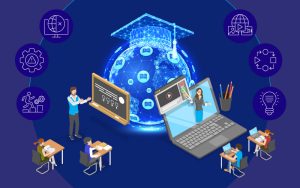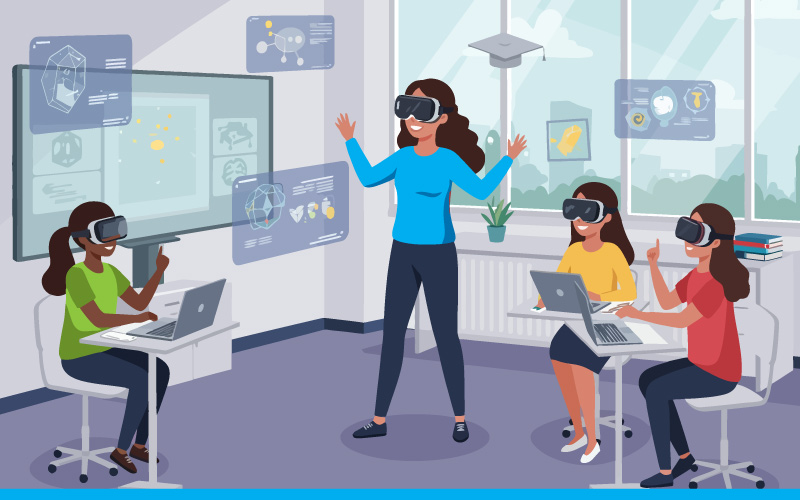Ever attempted to explain quantum mechanics to a fifth grader? It’s akin to explaining color to someone who has never seen it, tricky is a mild description, frustration is the only word that comes to mind, and the payoff less than nothing (i.e., repeated blank stares ad nauseam). Such is the fate of teaching STEM subjects in K-12 education. These subjects are filled with abstractions, complex calculations, and mind-bending theories that can potentially convert thrill into bewilderment overnight.
But the good news is that visual storytelling can change things. Imagine substituting thick textbook definitions with an animated narrative, a virtual experiment, or an interactive chart that helps the concept click into place.
Here in this blog, we will write about how visual storytelling transforms STEM education, breaking down frightening topics into bite-sized, interactive, and even fun learning. As an educator, instructional designer, or curriculum specialist, these approaches will help you teach students and make STEM easier to learn.

Why Visual Storytelling Works for STEM Education
Think back to the last time you struggled to learn something complex. Did reading a dry textbook help? Probably not. But if someone showed you a diagram, video, or hands-on demonstration, it probably made a whole lot more sense.
That’s because our brains are wired for visuals. Studies show that:
-
90% of what is communicated to the brain is visual.
-
People remember 80% of visuals compared to 20% of what is read.
-
Images are processed by the brain 60,000 times quicker than words.
Not only is visual learning desirable, it’s essential for K–12 learners, whose attention is too often in conflict with the latest TikTok meme. By connecting into this natural process of acquisition, visual narrative engages STEM content further, rendering it more engaging, and memorable.
Now, let’s dive into how we can harness this power.
1. Infographics and Animated Videos for Abstract Concepts
STEM is full of abstract concepts, considering quantum physics, chemical reactions, and algebraic equations. But these concepts don’t necessarily have to be scary. Animated videos and infographics can make mind-boggling subjects interesting, bite-sized visuals.
How to Use Infographics and Animations in STEM eLearning
-
Mathematics: Demonstrate step-by-step animations of equations solving themselves. Example: A video of cutting a pizza into slices to teach fractions.
-
Science: Infographics can depict complicated cycles, such as the water cycle, in an easy, graphic form. Example: An animated plant growing, wilting, and rotting to display the carbon cycle.
-
Engineering: Animations can demonstrate how bridges distribute weight or how a lever works. Example: A short animation of an engineer designing a roller coaster to teach physics principles.
Real-Life Example:
2. Narrative-Driven Learning: Using Stories and Characters
Let’s be real: Kids (and adults) love a good story. Stories make things stick. When we associate information with characters and plotlines, we’re more likely to remember it.
How to Incorporate Storytelling into STEM eLearning
-
Create relatable characters: Think of a young scientist, an aspiring engineer, or even a talking robot companion.
-
Set up real-world problems: Frame lessons as interactive stories where students help solve challenges.
-
Make it interactive: Allow students to make decisions that influence the outcome (e.g., “Should Sarah invest in solar panels or wind turbines for her renewable energy project?”)
Real-Life Example:
Envision learning Newton’s Laws of Motion by reading a tale of an astronaut stranded in space. Rather than memorizing equations, students track the astronaut as they maneuver through gravitational forces, inertia, and propulsion. Interactive, isn’t it?
3. Augmented Reality (AR) for Immersive STEM Learning
If you have ever witnessed children playing Pokémon Go, then you know already how awesome AR is and how kids enjoy AR. Now think of using the same technology to educate children in STEM.
How AR Enhances STEM Education
-
Explore the solar system: Students can hold up their tablet and see a 3D model of Mars floating in their classroom.
-
Dissect a virtual frog: No actual frogs are required (and fewer traumatized students!).
-
Interact with molecules: Instead of looking at 2D diagrams, students can manipulate a 3D DNA strand in real-time.
Real-Life Example:
An AR app allows students to physically walk around a life-sized human heart, observe it pumping blood, and watch its chambers in action. Instantly, biology isn’t abstract text on a page, it’s an entirely immersive experience
4. Interactive Simulations to Reinforce Learning
Simulations take learning beyond theory. They enable students to experiment, make mistakes, and learn through hands-on experiences, all within a risk-free environment.
How Simulations Benefit STEM Learning
-
Physics: Virtual labs where students can experiment with gravity, friction, and force.
-
Chemistry: Safe, digital simulations of chemical reactions, no explosions necessary.
-
Mathematics: Graphing calculators that visually demonstrate how changing a variable affects a function.
Real-Life Example:
A virtual chemistry lab where students mix chemicals and watch reactions unfold, without the risk of setting anything on fire (which, let’s be honest, is a real concern with middle schoolers).

Making Visual Storytelling Effective in STEM eLearning
So, how can we make sure visual storytelling is utilized well and not only for the sake of being flashy? Here are some best practices:
-
Balance visuals with text: Although visuals facilitate understanding, takeaways must be supported by brief text.
-
Keep animations simple: Very complicated visuals may be distracting instead of being helpful.
-
Ensure accessibility: Provide subtitles, alt text, and interactive transcripts for learners with varying needs.
Apply gamification methods: Add challenges, rewards, and levels to increase interactivity in learning.

Overcoming Challenges: A Personal Story
I remember once teaching a class of students on plate tectonics. They were clearly living in their own world until I showed them an animation of continents moving over millions of years like parts of a puzzle gradually coming apart.
And then, out of the blue, it happened. One of the students said, “Wait, so an earthquake is that why?” They were curious, began to solve the riddle, and even began to learn. It demonstrated the wonder of visual storytelling.

Conclusion: The Future of STEM Learning is Visual
STEM education does not have to be daunting. Using the proper visual storytelling methods like infographics, animations, AR, simulations, and interactive narratives, STEM can be interactive, relevant, and, if I may say so, enjoyable.
At Mitr Learning & Media, we focus on creating innovative digital learning solutions based on visual storytelling to make learning STEM exciting and effective. Whether you need our services in interactive animations, AR-based STEM experiences, or immersive simulations, we are here for you.
Contact us today and see how we can help energize your STEM eLearning courses with the power of visual storytelling!

What’s Next?
Want to learn more about designing effective STEM eLearning content? Check out these related blogs:
- Understanding the K12 Learner: Creating Age-Appropriate STEM Content
- Gamification in STEM eLearning: Strategies for K12 Success
- The Science of Engagement: What Makes STEM Content Effective in K12?
- Designing Interactive eLearning Content for STEM Education in K12 Schools
- Adapting STEM eLearning Content for Multilingual and Diverse Classrooms









